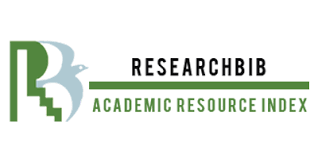FORMATION OF COGNITIVE SKILLS THROUGH TEACHING PHRASEOLOGY
Keywords:
Phraseological unit, idiomatic expressions, linguistic, component, cognitive, proficiency, language skills, stylistic awareness, creative thinking, didactics.Abstract
Teaching and learning phrasal verbs helps to reveal the conative processes of the mind in creative thinking. At the same time, it helps to develop other language skills: speaking, reading, etc. Development in lexical and stylistic awareness can lead to the development of awareness, which includes the perception and development of changes in basic form and meaning. The purpose of this scientific article is to reveal phraseological unity, associative connections and stylistic projects, linguistic cohesion in the text and new meaning in the context through the essence of teaching phraseology.
References
Brown, J. D. (1995). The elements of language curriculum: A systematic approach to program development. Heinle & Heinle Publishers, 20 Park Plaza, Boston, MA 02116. 139
Fernández Prieto, M. J. (2004). La enseñanza de fraseología. Evaluación de recursos y propuestas didácticas. Centro Virtual Cervantes, Actas XV, 349– 356.
Helgesen, M. 2007. Practical English Language Teaching: Listening. New York. Page -116
Hill, J (2001). Revising priorities: from grammatical failure to collocational success. In M. Lewis (Ed.) Teaching Collocation. Further Developments in the Lexical Approach (pp. 47-49). Teacher Training
Kunin, A.V. (2005) A course on modern English phraseology. Dubna: Dubna: Izd. centr «Feniks», 2005. 488 s.
Richards, J. C. (2001). The role of textbooks in a language program. Retrieved November, 12(2), 2008. (http://www.finchpark.com/courses/tkt/Unit_23/roleof-textbooks.pdf)251
Romer, U. (2009). The inseparability of lexis and grammar. Annual Review of Cognitive Linguistics. Page 144-162
Sherman, J. 2008. Using Authentic Video in the Language Classroom. Cambridge.Page -105
Tomlinson, B. (1998). Materials Development in Language Teaching. Cambridge. Cambridge University Press.2
Wu, Su-Yueh 2008. “Effective Activities for Teaching English Idioms for EFL Learners.” In The Internet TESL Journal, Vol. XIV, № 3, March. http://iteslj.org/Techniques/Wu TeachingIdioms.html.
Zerkina, N.N.(2011) Explicit and implicit representation of the concept WHITE in English. In Cognitive studies of the language.Issue VIII. Problems of linguistic consciousness: Moscow: Linguistics Institute of the Russian Academy of Sciences; p.405- 406
Boqiyeva, M. O. Qizi . (2024). Features of the role-playing to form communicative skills of learners. Golden brain, 2(1), 590–594. Https://doi.org/10.5281/zenodo.10466792







